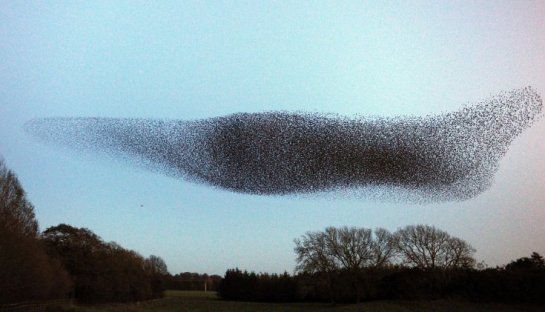Animal behavior is fascinating – how are thousands of birds or fish able to communicate with each other well enough to swirl and bank in perfect harmony, creating vortexes, undulating lines, and spheres. The underlying theory is that individuals take cues from their neighbors on where to move next. This collective movement acts as a survival mechanism by keeping the group safe from predators and weeding out weaker individuals regaled to the periphery.
Invasive to North America, settlers released 100 European Starlings in Central Park in 1890. Since then, their population swelled to over 200 million. We call starling formations “murmurations” and fish formations “schools”.
Compare bird and fish formations to collective human movement… for us it’s called a stampede and usually kills people. Some may argue there is evidence of collective movement in large urban centers but rarely is the entire group traveling together, except in a parade or rally, and never executed so well.
Source: Audubon Magazine and Ecology Magazine





Comments